Cherry laurels are evergreen, hardy and vigorous and particularly suitable as a hedge. But the varieties differ considerably in some cases.
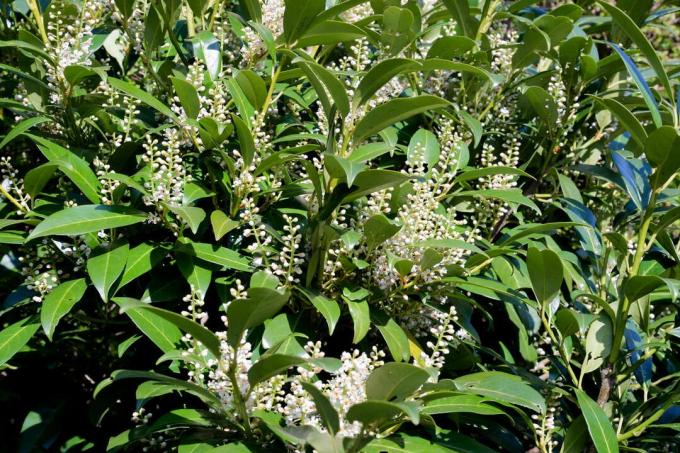
There are a total of over 25 different types of Cherry laurel (Prunus laurocerasus). These differ not only in terms of their appearance. Their demands on the environment and care also differ greatly. Before choosing a variety, you should think about where the plant will later live, what soil conditions there will be and how much space is available to it.
contents
- Hardy cherry laurel varieties
- Cherry laurel varieties for hedges
- Fast growing cherry laurel varieties
- Particularly pretty and short cherry laurel varieties
But you should also take your own wishes into account when choosing a variety. Do you want a particularly robust variety? Do you want to plant a hedge? Should this grow quickly or should it be less cutting-intensive? We will help you to choose the right cherry laurel variety with a small overview of varieties. Around 20 different varieties have been introduced in Germany, while the wild form of the laurel cherry can hardly be found in culture here.
Hardy cherry laurel varieties
Varieties with a high degree of winter hardiness can cope with icy winters and that without additional winter protection. With these varieties you don't need to worry about whether something will be left of your plant at the beginning of spring, because winter damage is limited here with the right care.
Etna: The special thing about this variety is the unusual color of the young leaves. It becomes two meters wide and high and has an average growth of about 30 cm per year. The bronze-colored or bronze-red shoots have broad and thick leaves. The variety is also well tolerated by pruning and is also suitable for small gardens. Further Details on the Etna variety can also be found here in this special article.
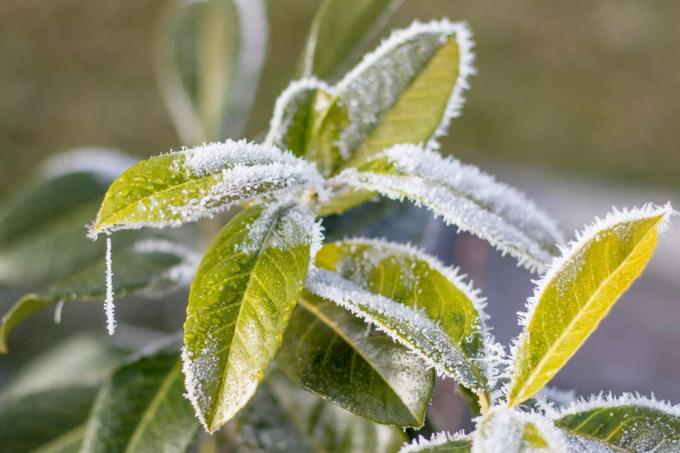
Upright cherry laurel 'Herbergii‘: This particularly slim growing variety with a strong, oval habit reaches heights of 3.5 m. The plants grow a good 30 cm annually and have thick leaves that are relatively small compared to other varieties. This sturdy variety is the most common in the garden. It also has a high tolerance for the Shotgun Sickness. More details on 'Herbergii' can be read here.
Dwarf cherry laurel 'Piri‘: With a final height of just one meter and a width of 1.2 m, this is very suitable hardy variety for low hedges, shaped cuts or for planting areas in front gardens or on Cemeteries. Due to its compact growth, its robustness, high location tolerance and health, this cherry laurel offers a good alternative to the disease-prone box tree.
Cleopatra: This particularly hardy and robust variety scores with a beautiful copper-red leaf color on the new shoot. It becomes up to 1.25 m wide and 2 m high.
Brenella: This Asian variety reaches a height of about 2 m and a width of 1.2 m in lime-poor, well-drained soils. Thanks to its good frost resistance, it can easily withstand temperatures below -35 ° C. The elongated, egg-shaped foliage shines in a strong dark green.
Winter star: The name already reveals the advantages of this variety: Even with long periods of frost deep below zero and strong sunlight, this cherry laurel survives winter well. It reaches heights of growth of 2 m and widths of 1.8 m. The robust shrub is therefore also ideal as a hedge plant. The foliage is glossy dark green and light green on the underside.
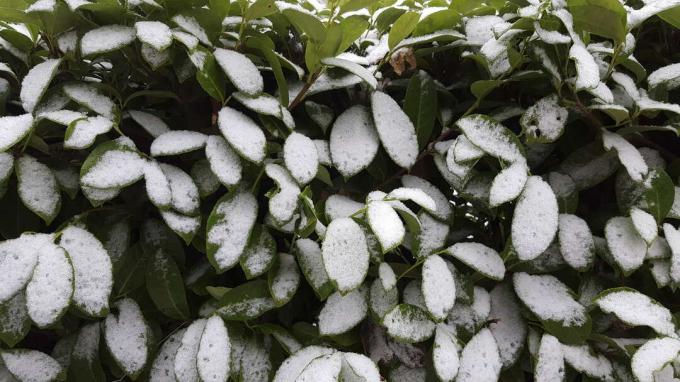
Portuguese cherry laurel (Prunus lusitanica): This variety is of slender, medium-strong growth with elongated, small leaves. It grows dense and compact up to a height of up to 6 m and is therefore ideal as a hedge plant. In addition, it is very similar to real laurel. The winter hardiness should be that of P. laurocerasus still surpass.
Myrtifolia: This variant has green, shiny foliage. It is best to choose a sunny location with heavy soil. In addition, the variety is hardy to below -35 ° C, is 2 m wide and 2.5 m high and is suitable as a hedge, specimen and container plant
Angustifolia: Despite its Mediterranean origin, this variety has good winter hardiness. It has particularly delicate, narrow leaves in glossy dark green that grow particularly densely. In addition, it is a very robust and pruning variety. The cherry laurel is ideal for hedges up to 4 m high.
Angustifolia à Italia: This variety has elongated, egg-shaped leaves in leathery, glossy green and well-branched, upright growth up to 4 m high and 1.5 m wide. It should be better protected from the winter sun, but is otherwise hardy to -35 ° C and suitable as a hedge plant
Cherry laurel varieties for hedges
Cherry laurels are popular hedge plants because of their evergreen leaves and rapid growth. But the same applies here: some varieties are better suited as a hedge than others. Below are a few varieties that are good for Cherry laurel hedges are suitable. You can find more information about this in our special article.
Pillar cherry laurel 'Genolia‘: This very hardy variety is the ideal hedge variety due to its very upright and slender habit (1 m wide). It only grows weakly and therefore does not need to be pruned too often. The plants reach heights of up to 3.5 m and have dark green, leathery and narrow leaves. More details about the Genolia variety can also be found here.

Leander: This medium-strong growing variety is considered the typical hedge laurel. It is hardy and has a very broad, bushy habit when uncut.
Prudonti: The variety quickly reaches heights of 3 m with a width of only about 1 m and is therefore wonderfully suitable for hedge planting as privacy and wind protection, even in smaller gardens. The elongated foliage is glossy mid-green.
Reynvaanii: This beautifully upright and adaptable type of hedge can cope with suboptimal location conditions in the shade. The long, narrow foliage is a glossy dark green. It can be up to 3 m high and 2 m wide and is very hardy.
Renault Ace: This variety grows quickly into a compact, opaque hedge up to 3 m high and 2.5 m wide. Due to its shade tolerance and the high level of stability against root pressure, it also thrives under large trees. The elliptical leaves shine in a deep dark green.
Linus: The very upright, densely branched growth makes this cherry laurel the ideal choice for free-standing hedges. Because if there is enough space, the shrub, which is just 1.2 m wide and 3.5 m high, does not have to be cut. Furthermore, the variety convinces with good vigor and frost hardiness.
Zabeliana: This variety is suitable for wide hedges and is characterized by its good cut tolerance, wind resistance and winter hardiness. Due to these properties, this cherry laurel can also be used wonderfully for planting areas, because its width is up to 5 m.
Broad-growing laurel cherry 'Otto Luyken‘: This very frost-hardy variety impresses with its low (1.5 m high), broad, bushy and dense growth. It is therefore ideally suited as a ground cover or low hedge when planted in groups. It also has relatively small, narrow leaves and grows only weakly at 20 cm per year.
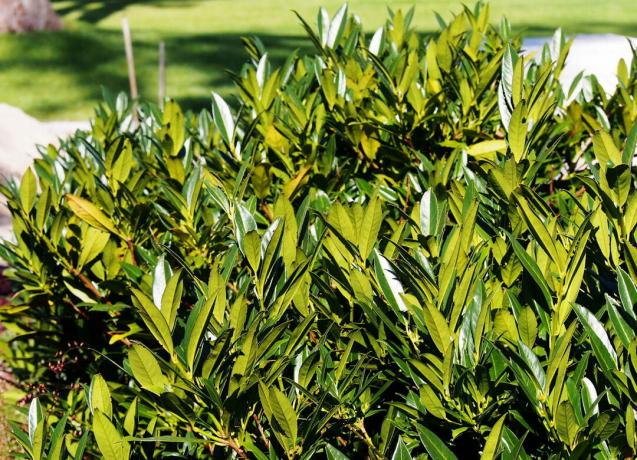
Mano: The habit of this variety scores with a broad and high growth of approx. 1.5 m. So it can - in combination with its good cut resistance - be designed wonderfully.
Greentorch: This variety reaches a height of about 2.5 m and a width of 1.4 m. It grows quite slowly for a cherry laurel, but is still very easy to prune. The oval leaves are glossy dark green.
Greenpeace: The easy-care variety is wonderfully hardy and grows at a moderate pace into a hedge up to 4 m high and 1.8 m wide. The elliptical leaves are serrated on the edge and appear in an invigorating, rich green.
Mari: This is an ideal hedge variety with dense branching for the lazy hobby gardener, because the variety does not have to be cut at a height of 1 to 2 m.
Fast growing cherry laurel varieties
Fast-growing varieties grow up to 70 cm in height each year and reach heights of up to five meters in total. Although they quickly serve as a good privacy screen and are ideal as a specimen plant, the plants have to be pruned very often to stay in shape.
Narrow-leaved cherry laurel 'Caucasica‘: This growth miracle has slim, pointed leaves and is relatively sensitive to frost. However, the plants sprout again after a harsh winter. The variety is suitable as a specimen plant, but also excellent for planting hedges. In addition, it convinces with a high level of resistance to common diseases.

Large-leaved cherry laurel 'Rotundifolia‘: This thick-leaved variety has a medium sensitivity to frost and should only be planted in sheltered places. However, it sprouts every year. The relatively light leaves are large and wide.
Dark-leaved cherry laurel 'Schipkaensis macrophylla‘: This variety has the largest leaves in deep dark green. Not only is it particularly fast-growing, it is also very hardy and robust against diseases. In addition, it becomes up to 3 m high and 3 m wide.
Diana: This variety has a strong, funnel-shaped habit with ovate, pointed leaves. The shoot is slightly copper-colored. The variety is also very hardy (even below -35 ° C) and is suitable for single, group or hedge planting. The growth reaches heights of up to 3 m and widths of about 2 m.
Hibani: This is a uniquely beautiful new breed with strong, tall and wide growth and narrow, pointed leaves. The shoot is slightly copper-colored. It becomes up to 3 m high and 1.5 m wide.
Novita: This variety has the same characteristics as 'Rotundifolia', only the leaf color is a little darker. You can find more information about this in a specially compiled article.
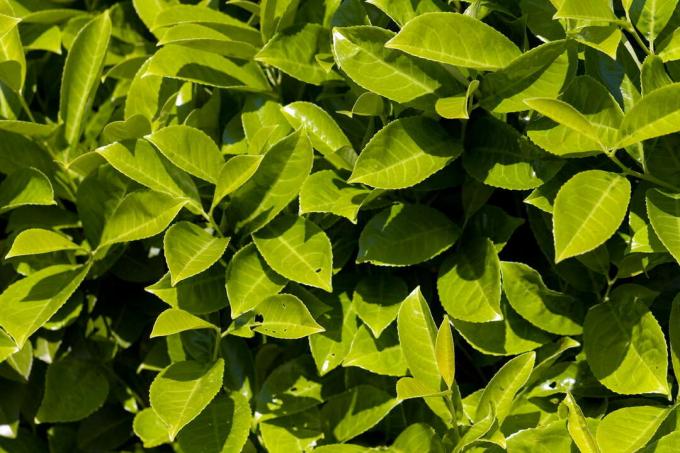
By the way: Most large-leaved varieties are fast-growing.
Particularly pretty and short cherry laurel varieties
With such a large selection of varieties, there are also some real eye-catchers and special features to be discovered among the cherry laurel varieties. There are varieties that score with their unusual growth shape or aesthetics.
Creeping cherry laurel 'Mount Vernon‘: This variety has a creeping, flat spreading habit of 35 cm high and up to 120 cm wide. Therefore, it is ideally suited as a ground cover. The dark green leaves are elongated. This variety is sufficiently hardy down to -35 ° C and also thrives in very shady places with great competition for roots.
Broad-growing cherry laurel 'Cherry Brandy‘: With a height of only 80 cm and a width of up to 3 m, the variety is wonderfully suitable for large areas. It is extremely frost and drought resistant and can withstand pruning without any problems. The elliptical, elongated leaves are glossy medium to dark green.
Gajo: The small, slow-growing variety is just 1 m high and is therefore wonderfully suitable for edging paths or beds as well as for growing in pots. The elliptical leaves have a dark green shine.
Mischeana: This variety becomes 1.5 m high and 2.5 m wide. It is well hardy, has dark green foliage, a high tolerance for location and blooms again in September.
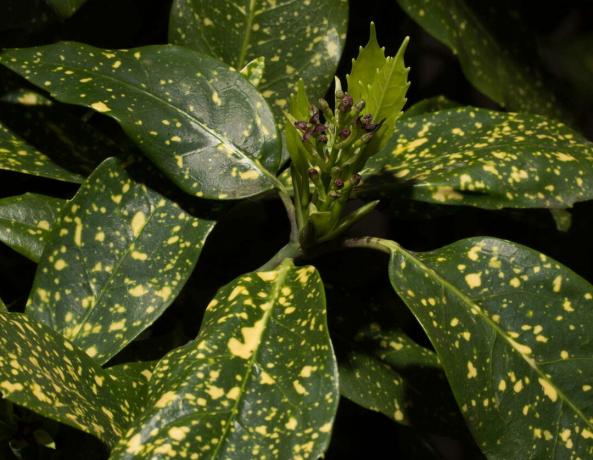
Marbled White: The leaves of this variety are conspicuously marbled in white. It grows very slowly, branched and dense. A height of 2.5 m and a width of around 2 m are achieved.
Ani: The leaf shoots of this variety are bright red and turn green over time, which makes it a particularly attractive variety. With a final height of only 1.5 m, it is suitable for medium-high hedges as well as a solitary or container plant.
Prunus lusitanica 'Tico‘: The special thing about this variety are its bronze-colored flowers. In addition, it scores with a very good winter hardiness, cut tolerance and a height of around 2.5 m.
As you can see, there are many different types of cherry laurel. All information about the cultivation and care of Cherry laurel, can be found in our special article.
